 Overview
Overview
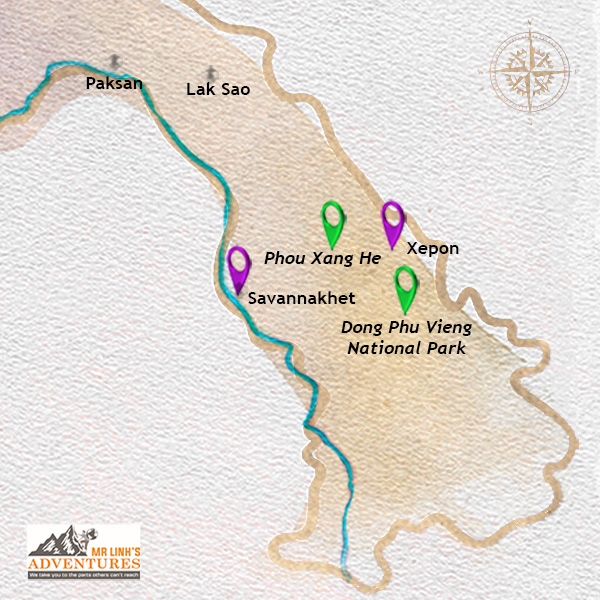
Enclosed between Thailand and Vietnam,
Savannakhet is a vibrant and prosperous Laotian city. It serves as the capital of the province of the same name and is the second most populous city in Laos, with an estimated population of 125,760 in 2018.
As a border town, Savannakhet is a significant commercial and transportation hub. It is connected to Thailand by the Second Lao-Thai Friendship Bridge, which spans the Mekong River. The city also serves as an important road and rail junction, making it a center for trade and exchanges between countries in the region.
Savannakhet is a cosmopolitan city, where people of diverse origins coexist. In addition to the Lao, who make up the majority of the population, there are Tai Dam and Mon Khmer minorities, as well as people of Vietnamese and Chinese descent.
Finally, Savannakhet offers travelers an exceptional natural spectacle. Although its cities are discreet, the region is home to three national parks of striking beauty, as well as vestiges of the famous Ho Chi Minh Trail, a testament to the region's tumultuous history.
 Top Attractions
Top Attractions
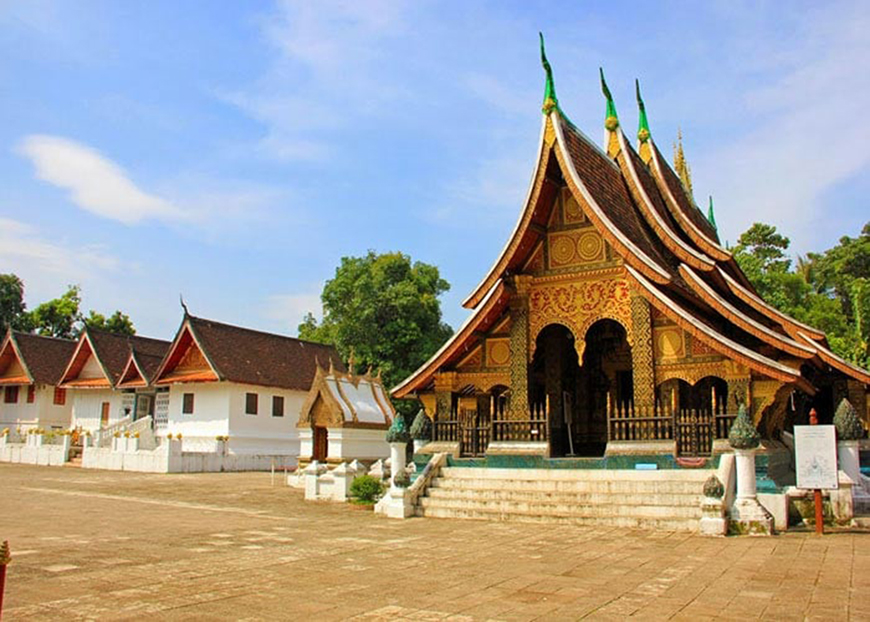 Wat Xayaphoum, the oldest temple in the region
Wat Xayaphoum, the oldest temple in the region
Savannakhet, the second largest city in Laos, captivates with its blend of colonial history, Buddhist spirituality, and prehistoric curiosities. Here are four essential sites to explore in this southern province:
Wat Xayaphoum
A jewel of 16th-century architecture, Wat Xayaphoum is the oldest temple in the region. This sacred site, located opposite the Mekong River, houses both a monastic school and a place of worship. Its colorful frescoes and peaceful atmosphere make it an unmissable site. Don't miss the Lao New Year festivities in April.
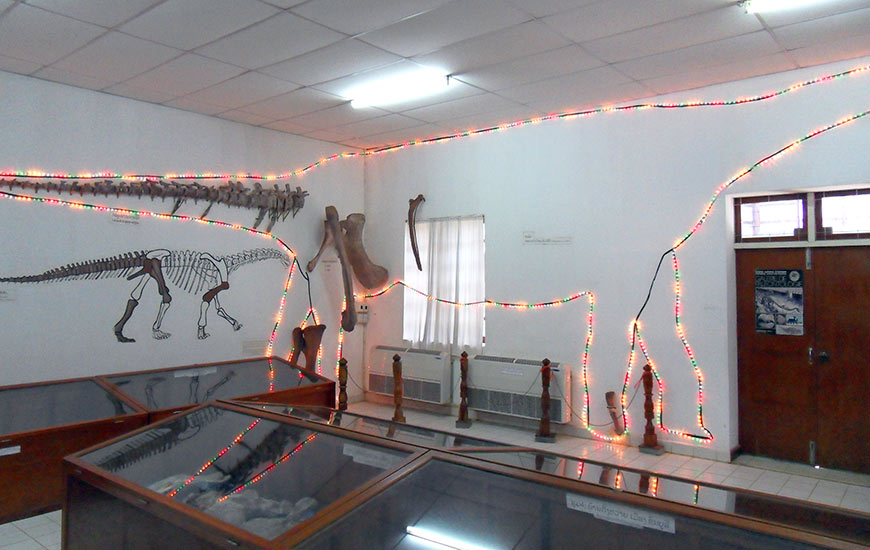 Unique in Southeast Asia, the Dinosaur Museum
Unique in Southeast Asia, the Dinosaur MuseumDinosaur Museum
Unique in Southeast Asia, the Dinosaur Museum offers a fascinating glimpse into the region's prehistoric past. Here, you can admire fossils and dinosaur skeletons discovered locally, including a tyrannosaurus tooth unearthed in the 1930s. The collections trace the local paleontological history thanks to the work of the French scientist Josué Hoffet.
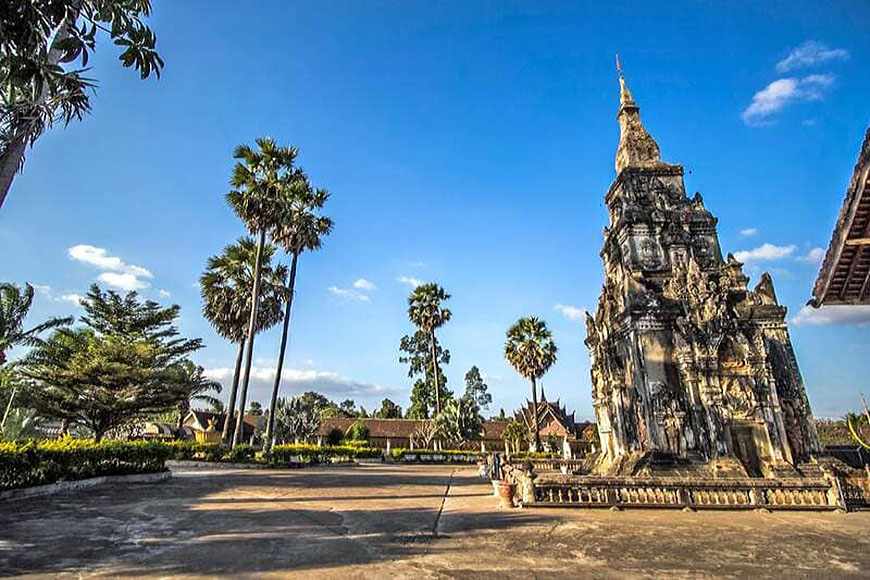 The That Inhang stupa houses a relic of Buddha
The That Inhang stupa houses a relic of BuddhaAbout fifteen kilometers from the city, the That Inhang Stupa, a sacred site dating back to the 12th century, is believed to house a relic of Buddha. From the top of its 12 meters, this golden stupa dominates an architectural ensemble adorned with Khmer bas-reliefs. Considered the second most important pilgrimage site in Laos after the Wat Phou temple, That Inhang is renowned for its impressive architecture and its festivals that take place during full moons.
 This emblematic bridge offers stunning views of the Mekong River
This emblematic bridge offers stunning views of the Mekong RiverLao-Thai Friendship Bridge
An emblem of the friendship between Laos and Thailand, the bridge that connects them offers a breathtaking view of the Mekong River. It is an ideal place to capture the landscape and serves as a gateway to other discoveries in the region. Don't miss a stroll along the Mekong at sunset and the exploration of the French colonial buildings in the city center, including the Sainte-Thérèse Church, which testify to the city's rich historical heritage.
 See & Do
See & Do
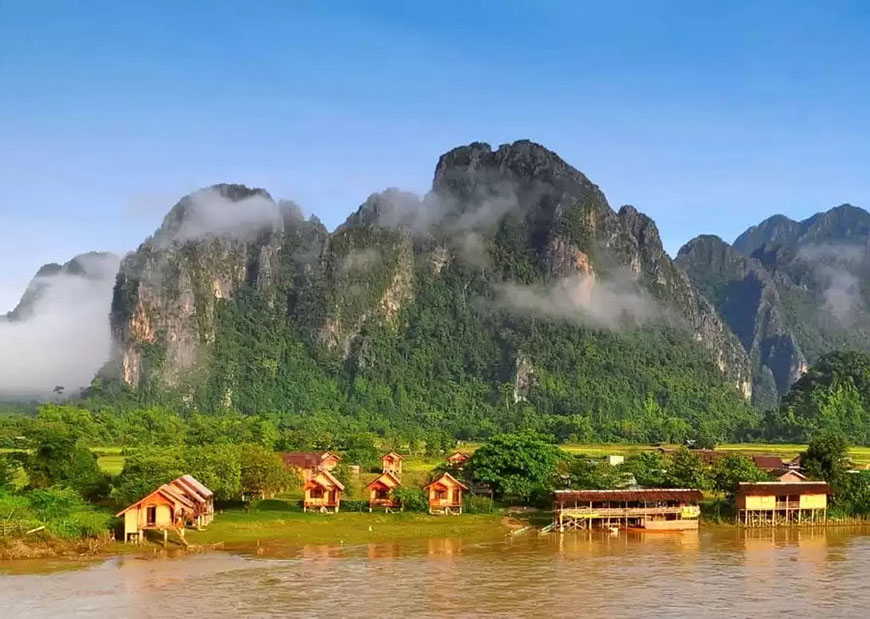 Dong Phou Vieng is one of the serene national parks in Laos Central area
Dong Phou Vieng is one of the serene national parks in Laos Central area
Savannakhet offers a variety of activities to suit all tastes.
Wild life watching
The jewel of this region is undoubtedly the Dong Phou Vieng National Park. Its lush forests are home to exceptional fauna, where you may have the chance to encounter silvered langurs, leaf monkeys, and hornbills. A three-day trek, with an overnight stay in a Katang village and a boat trip on the river, will immerse you in the heart of this sanctuary of biodiversity.
Not far away, the Phou Xang Hae National Park is another natural wonder. Unfortunately, its access is difficult due to the precarious condition of the roads and the interruption of the five-day treks that were organized there.
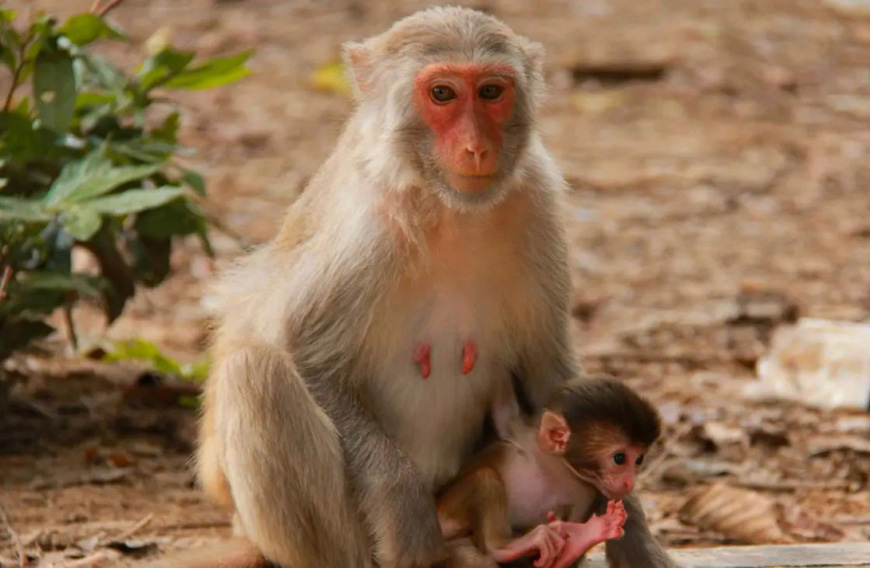 Dong Natad is an easily accessible National Protected Area
Dong Natad is an easily accessible National Protected Area
Savannakhet is home to exceptional biodiversity, a paradise for observing birds and other wild animals. The forests and nature reserves, such as Dong Natad, offer unique opportunities for nature enthusiasts.
Trekking
The Savannakhet region is a paradise for trekking enthusiasts, with the Dong Natad National Protected Area offering unforgettable experiences. The trails wind through lush forests, revealing exceptional fauna, including rare birds and other wild animals. You can opt for day trips or longer hikes with overnight stays in local homes, for a total immersion in the local culture.
Besides trekking, you can also visit the renowned Buddhist pilgrimage site That Ing Hang.
Kayaking and Cruises on the Mekong
The Mekong River offers excellent opportunities for kayaking and river cruises. Visitors can explore the surrounding rivers while enjoying magnificent landscapes and discovering isolated villages. Kayaking is particularly recommended for those who wish to combine adventure and relaxation.
Cycling
Savannakhet and its surroundings can be pleasantly discovered by bicycle. Routes suitable for all levels run along the Mekong River and provide access to natural and cultural sites. It's a great way to meet locals and explore the picturesque landscapes.
 Go Green
Go Green
Mr. Linh's Adventure, offers tailor-made tours to discover the wonders of the province of Savannakhet and its surroundings. Our tours are designed to offer you an authentic and unforgettable experience.
Here are some examples of tours we offer:
"Adventure in the Heart of Laos" Tour: This multi-day tour will take you to discover the unmissable sites of Savannakhet, such as the Mekong River, the Phou Xieng Thong National Park, and the archaeological site of Angkor.
"In the Footsteps of History" Tour: This tour will immerse you in the history of the region, with visits to temples, museums, and historical sites.
"Meetings and Sharing" Tour: This tour will allow you to meet local communities, discover their culture, and share their daily life.
 Heritage
Heritage
The famous Vat Rattanalangsi
Savannakhet, a city with old-fashioned charm, offers a journey through time through its architecture from the early 1900s. Its French villas, although sometimes dilapidated, bear witness to a colonial past and give a unique atmosphere to the city.
In addition to the Vat Xayaphoum and the That Ing Hang, those interested in spirituality will visit the Vat Rattanalangsi, famous for its 15-meter reclining Buddha, another important facet of the local Buddhist heritage. Those passionate about old stones will turn to the ruins of Heuan Hin, archaeological vestiges of Khmer art, testifying to the historical heritage and cultural influences that have shaped Savannakhet over the centuries.
As you approach the Vietnamese border, the town of Sepon (Xepon) appears, like so many others in this region of Laos, rather ordinary. Only its war museum, which gathers vestiges of military activity along the famous Ho Chi Minh Trail, deserves a stop to better understand local history. On the outskirts of the town, the Muang Phin monument, an imposing socialist-style construction, commemorates the cooperation between the Pathet Lao and North Vietnam during the Indochinese conflicts. It represents soldiers brandishing an AK-47 and the Laotian flag, thus symbolizing the alliance between the two nations in these dark hours.
The real reason to venture so far east, however, is the infamous Ho Chi Minh Trail. The most accessible parts of the trail are the villages of Ban Dong and Pa-Am, where tanks and missile launchers are on display. To discover the rest of the trail, you can opt for the various all-inclusive motorcycle tours that take you on a good part of the trail, while having stories and historical contexts told to you by an English-speaking guide.
 Food & Drinks
Food & Drinks
Khao Piak Sen, the must-try local specialty
The cuisine of Savannakhet is a blend of Laotian, Thai, and Vietnamese flavors.
The Savannakhet Plaza night market is undoubtedly the ideal place to discover the tasty Laotian street food. With about twenty enticing stalls, you will find all the local specialties, from skewers to noodle soups, including dim sum and sushi.
A popular local specialty is Khao Piak Sen, composed of thick noodles in a broth, topped with delicious fried pork belly or chicken. It may not be the healthiest meal there is, but it is certainly rich and delicious!
 Directions
Directions
Location
Savannakhet is located in the center of Laos, about 450 km from Vientiane and 600 km from Hanoi.
How to get there
You can get to Savannakhet by plane, bus, or train.
Plane: Direct flights connect Vientiane and Hanoi to Savannakhet. The price of a plane ticket varies depending on the airline and the season.
Bus: Buses connect Vientiane and Hanoi to Savannakhet. The journey takes about 10 hours from Vientiane and 15 hours from Hanoi. The price of a bus ticket is about 20 USD from Vientiane and 30 USD from Hanoi.
Train: There is no direct rail link between Vientiane and Savannakhet. You can take the train from Vientiane to Thanaleng, then take a bus to Savannakhet.
Best time to visit
The best time to visit Savannakhet is from November to March, during the dry season. The temperatures are pleasant and the sky is sunny.